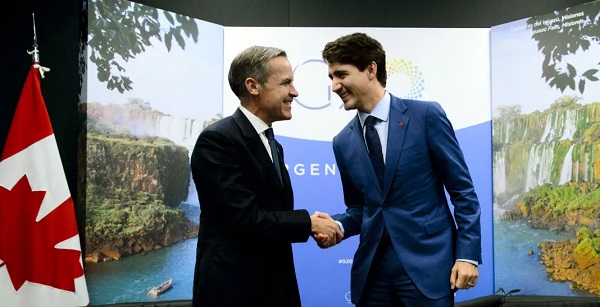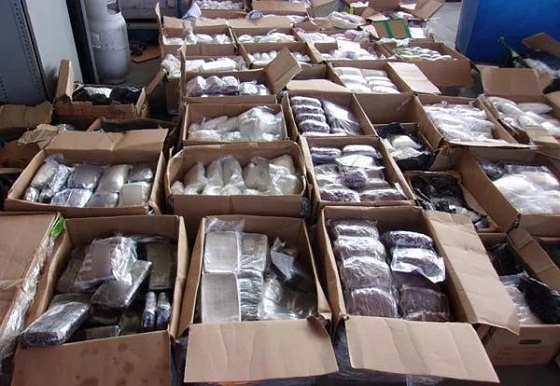Alberta
Albertans encouraged to wear cloth masks in public: easy tips and links on “How To” make your own

It is not the law, but Canada and Alberta have agreed with the idea that wearing a homemade cloth mask might help in the spreading the coronavirus, especially when it is hard to maintain the 2-metre physical distancing when in public.

YouTuber Japanese Creations offers how-to make face masks videos and tip for fogged-up glasses. Link Below
It is a culture clash between eastern and western countries. Unlike most Asian countries where a lot of the population regularly wear masks in public, in Western counties wearing a mask in public is not as easily accepted by the majority of the population. Many people find that they are treated as “infected” when they wear a face mask in public. Only time will tell if this Covid- 19 pandemic will change the majority of Canadians opinion people wear masks in public.
In February, China’s state media site posted a very strong opinion piece entitled, “Refusing Mask Wearing In Public Is A Threat To Civilization.”
Also not pulling any punches, virologist and immunologist, George Gao told ScienceMagazine.org, “The big mistake in the U.S. and Europe – is that people aren’t wearing masks. Gao is the director-general of the Chinese Center for Disease Control and Prevention, “This virus is transmitted by droplets and close contact.

George Gao
You’ve got to wear a mask, because when you speak, there are always droplets coming out of your mouth – masks, can prevent droplets that carry the virus from escaping and infecting others.” Across Asian countries the populations are onboard that, “there are an unknown number of people that are asystematic, carrying the coronavirus and they do not even know it.” So, in the spirit of a country’s solidarity, “there is a need to protect others from yourself.”
In recent weeks countries have seen the stats and cannot ignore the lower numbers of infected in mask wearing countries like, South Korea, Taiwan, Japan, Singapore, the region of Hong Kong and China has also now flatted the curve and have loosed up on the city military lock-downs.
Recently passing laws that make it mandatory to wear a face mask in public are the Czech, Slovakia, Indonesia and the Philippines. On April 3rd, US President Donald Trump, announced that the Centers for Disease Control and Prevention (CDC) is recommending, on a voluntary basis, that Americans wear “non-medical cloth” face coverings.

Making homemade masks can be a fun family craft time. If you are of age, you can even toast a glass of wine to celebrate a good job. Make extras so you can change them up, give to friends or even donate them to those in need.
In Canada Chief public health officer Dr. Theresa Tam has changed her view and is now saying, “Wearing a non-medical mask, even if you have no symptoms, is an additional measure that you can take to protect others around you in situations where physical distancing is difficult to maintain, such as in public transit or maybe in the grocery store.”
In Alberta, the view has also changed on the general public wearing mask in public. Leading off with the premier Kenney, who has seen countries that have been successful in keeping the transmission of COVID-19 down, have all had widespread use of face masks. Alberta’s Chief Medical Officer of Health, Dr. Deena Hinshaw said at a press conference, “What we know is that people who are sick spread illness – wearing a non-medical mask, such as a homemade cloth mask, has not been proven to protect the person who is wearing it,” but added, “However, it may be helpful in protecting others around you.”
The Alberta government wants people to follow these rules, even when wearing face coverings in public.
- Continue to follow all other public health guidance (staying two metres away from others, wash hands regularly, stay home when sick).
- Avoid touching your face and mask while using it.
- Wash hands before putting on a mask, then before and after removing it.
- Clean a cloth mask as soon as it gets damp or soiled.
- Put it directly in the washing machine or a sealed bag that can be emptied into the washing machine and then be disposed of.
- Cloth masks can be laundered with other items using a hot cycle, then dried in the dryer at the highest temperature setting.
- Medical masks can’t be washed and should be discarded and replaced as soon as they get damp, soiled or crumpled.
- Dispose of these masks in a lined garbage bin.
- Do not share masks with others.
There are many online resources where you can easily make a cloth mask with or without a sewing machine.
- Youtuber Danysska from the Czech republic has a very easy “How To” do instructions on how to make a cloth mask with no sewing.
- Centres for Disease Control and Prevention has a web page with easy instructions on how to make 3-different masks, one needs a sewing machine and two do not.
- With 1.5+ million views already. Japanese Creations on YouTube has two great how to videos. The second one has good tips to help glasses from fogging up, amazing what a small piece of tinfoil can do. Both do not need for a sewing machine. https://www.youtube.com/channel/UCyxl_I7lKw-bjUz3ECa_jwg

- The Surgeon General for the US, Dr. Jerome Adam has an easy to follow how to make a face mask video, with-out a sewing machine.
- From prixprix on Instructables.com with a step by step photo instructions on how to make face mask out of an old T-shirt, no sewing machine required.
- With over 1.9+ million views, HomeMadeOnOurHomestead, has a good how to sew a reusable face mask with a filter pocket.

- 1.6+ million views and counting, Thoughtful Creativity, has a tutorial on how to make cloth face masks in a batches using a sewing machine.
- Not wanting to be outdone with 1.8+ million views, Kim’s Kitchen Affair, and her DIY how to sew a reusable pleated face mask with nose bridge and filter pockets in just 5 Minutes. Some sewing skills required!
Click here to read more on Todayville Edmonton.
Alberta
Carney forces Alberta to pay a steep price for the West Coast Pipeline MOU
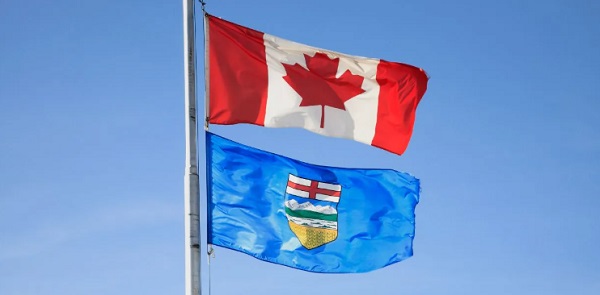
From the Fraser Institute
The stiffer carbon tax will make Alberta’s oil sector more expensive and thus less competitive at a time when many analysts expect a surge in oil production. The costs of mandated carbon capture will similarly increase costs in the oilsands and make the province less cost competitive.
As we enter the final days of 2025, a “deal” has been struck between Carney government and the Alberta government over the province’s ability to produce and interprovincially transport its massive oil reserves (the world’s 4th-largest). The agreement is a step forward and likely a net positive for Alberta and its citizens. However, it’s not a second- or even third-best option, but rather a fourth-best option.
The agreement is deeply rooted in the development of a particular technology—the Pathways carbon capture, utilization and storage (CCUS) project, in exchange for relief from the counterproductive regulations and rules put in place by the Trudeau government. That relief, however, is attached to a requirement that Alberta commit to significant spending and support for Ottawa’s activist industrial policies. Also, on the critical issue of a new pipeline from Alberta to British Columbia’s coast, there are commitments but nothing approaching a guarantee.
Specifically, the agreement—or Memorandum of Understanding (MOU)—between the two parties gives Alberta exemptions from certain federal environmental laws and offers the prospect of a potential pathway to a new oil pipeline to the B.C. coast. The federal cap on greenhouse gas (GHG) emissions from the oil and gas sector will not be instituted; Alberta will be exempt from the federal “Clean Electricity Regulations”; a path to a million-barrel-per day pipeline to the BC coast for export to Asia will be facilitated and established as a priority of both governments, and the B.C. tanker ban may be adjusted to allow for limited oil transportation. Alberta’s energy sector will also likely gain some relief from the “greenwashing” speech controls emplaced by the Trudeau government.
In exchange, Alberta has agreed to implement a stricter (higher) industrial carbon-pricing regime; contribute to new infrastructure for electricity transmission to both B.C. and Saskatchewan; support through tax measures the building of a massive “sovereign” data centre; significantly increase collaboration and profit-sharing with Alberta’s Indigenous peoples; and support the massive multibillion-dollar Pathways project. Underpinning the entire MOU is an explicit agreement by Alberta with the federal government’s “net-zero 2050” GHG emissions agenda.
The MOU is probably good for Alberta and Canada’s oil industry. However, Alberta’s oil sector will be required to go to significantly greater—and much more expensive—lengths than it has in the past to meet the MOU’s conditions so Ottawa supports a west coast pipeline.
The stiffer carbon tax will make Alberta’s oil sector more expensive and thus less competitive at a time when many analysts expect a surge in oil production. The costs of mandated carbon capture will similarly increase costs in the oilsands and make the province less cost competitive. There’s additional complexity with respect to carbon capture since it’s very feasibility at the scale and time-frame stipulated in the MOU is questionable, as the historical experience with carbon capture, utilization and storage for storing GHG gases sustainably has not been promising.
These additional costs and requirements are why the agreement is the not the best possible solution. The ideal would have been for the federal government to genuinely review existing laws and regulations on a cost-benefit basis to help achieve its goal to become an “energy superpower.” If that had been done, the government would have eliminated a host of Trudeau-era regulations and laws, or at least massively overhauled them.
Instead, the Carney government, and now with the Alberta government, has chosen workarounds and special exemptions to the laws and regulations that still apply to everyone else.
Again, it’s very likely the MOU will benefit Alberta and the rest of the country economically. It’s no panacea, however, and will leave Alberta’s oil sector (and Alberta energy consumers) on the hook to pay more for the right to move its export products across Canada to reach other non-U.S. markets. It also forces Alberta to align itself with Ottawa’s activist industrial policy—picking winning and losing technologies in the oil-production marketplace, and cementing them in place for decades. A very mixed bag indeed.
Alberta
West Coast Pipeline MOU: A good first step, but project dead on arrival without Eby’s assent
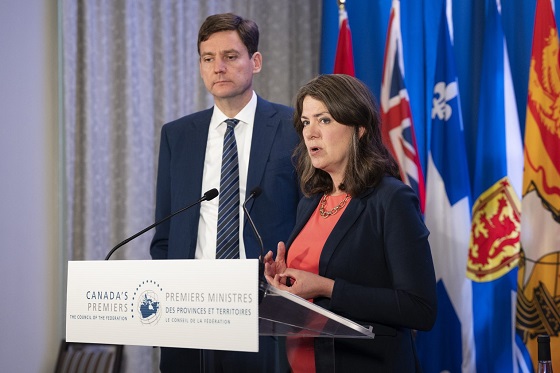
The memorandum of understanding just signed by Prime Minister Mark Carney and Premier Danielle Smith shows that Ottawa is open to new pipelines, but these are unlikely to come to fruition without British Columbia Premier David Eby’s sign-off, warns the MEI.
“This marks a clear change to Ottawa’s long-standing hostility to pipelines, and is a significant step for Canadian energy,” says Gabriel Giguère, senior policy analyst at the MEI. “However, Premier Eby seems adamant that he’ll reject any such project, so unless he decides not to use his veto, a new pipeline will remain a pipedream.”
The memorandum of understanding paves the way for new pipeline projects to the West Coast of British Columbia. The agreement lays out the conditions under which such a pipeline could be deemed of national interest and thereby, under Bill C-5, circumvent the traditional federal assessment process.
Adjustments to the tanker ban will also be made in the event of such a project, but solely for the area around the pipeline.
The federal government has also agreed to replace the oil and gas emissions cap with a higher provincial industrial carbon tax, effective next spring.
Along with Premier Eby, several First Nations groups have repeatedly said they would reject any pipeline crossing through to the province’s coast.
Mr. Giguère points out that a broader issue remains unaddressed: investors continue to view Canada as a high-risk environment due to federal policies such as the Impact Assessment Act.
“Even if the regulatory conditions improve for one project, what is Ottawa doing about the long-term uncertainty that is plaguing future projects in most sectors?” asks the researcher. “This does not address the underlying reason Carney has to fast-track projects piecemeal in the first place.”
Last July, the MEI released a publication on how impact assessments should be fair, transparent, and swift for all projects, not just the few favoured by Ottawa under Bill C-5.
As of July, 20 projects were undergoing impact assessment review, with 12 in the second phase, five in the first phase, and three being assessed under BC’s substitution agreement. Not a single project is in the final stages of assessment.
In an Economic Note published this morning, the MEI highlights the importance of the North American energy market for Canada, with over $200 billion moving between Canada and the United States every year.
Total contributions to government coffers from the industry are substantial, with tens of billions of dollars collected in 2024-2025, including close to C$22 billion by Alberta alone.
“While it’s refreshing to see Ottawa and Alberta work collaboratively in supporting Canada’s energy sector, we need to be thinking long-term,” says Giguère. “Whether by political obstruction or regulatory drag, Canadians know that blocking investment in the oilpatch blocks investment in our shared prosperity.”
* * *
The MEI is an independent public policy think tank with offices in Montreal, Ottawa, and Calgary. Through its publications, media appearances, and advisory services to policymakers, the MEI stimulates public policy debate and reforms based on sound economics and entrepreneurship.
-
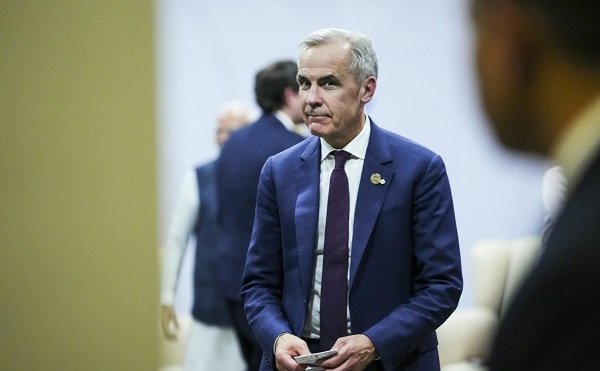
 Business2 days ago
Business2 days agoFederal major projects list raises questions
-

 Crime2 days ago
Crime2 days agoFBI Seizes $13-Million Mercedes Unicorn From Ryan Wedding’s Narco Network
-

 Artificial Intelligence1 day ago
Artificial Intelligence1 day agoTrump’s New AI Focused ‘Manhattan Project’ Adds Pressure To Grid
-
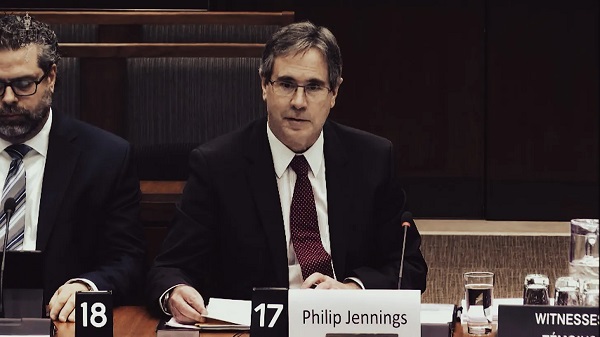
 Business2 days ago
Business2 days agoBlacked-Out Democracy: The Stellantis Deal Ottawa Won’t Show Its Own MPs
-

 International21 hours ago
International21 hours agoAfghan Ex–CIA Partner Accused in D.C. National Guard Ambush
-

 Agriculture2 days ago
Agriculture2 days agoHealth Canada indefinitely pauses plan to sell unlabeled cloned meat after massive public backlash
-

 International2 days ago
International2 days agoAmerica first at the national parks: Trump hits Canadians and other foreign visitors with $100 fee
-
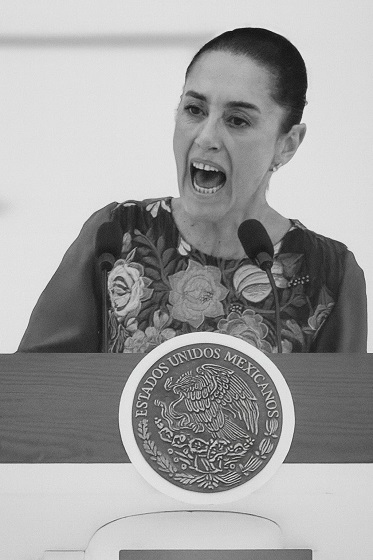
 Crime2 days ago
Crime2 days agoMexico’s Constitutional Crisis





